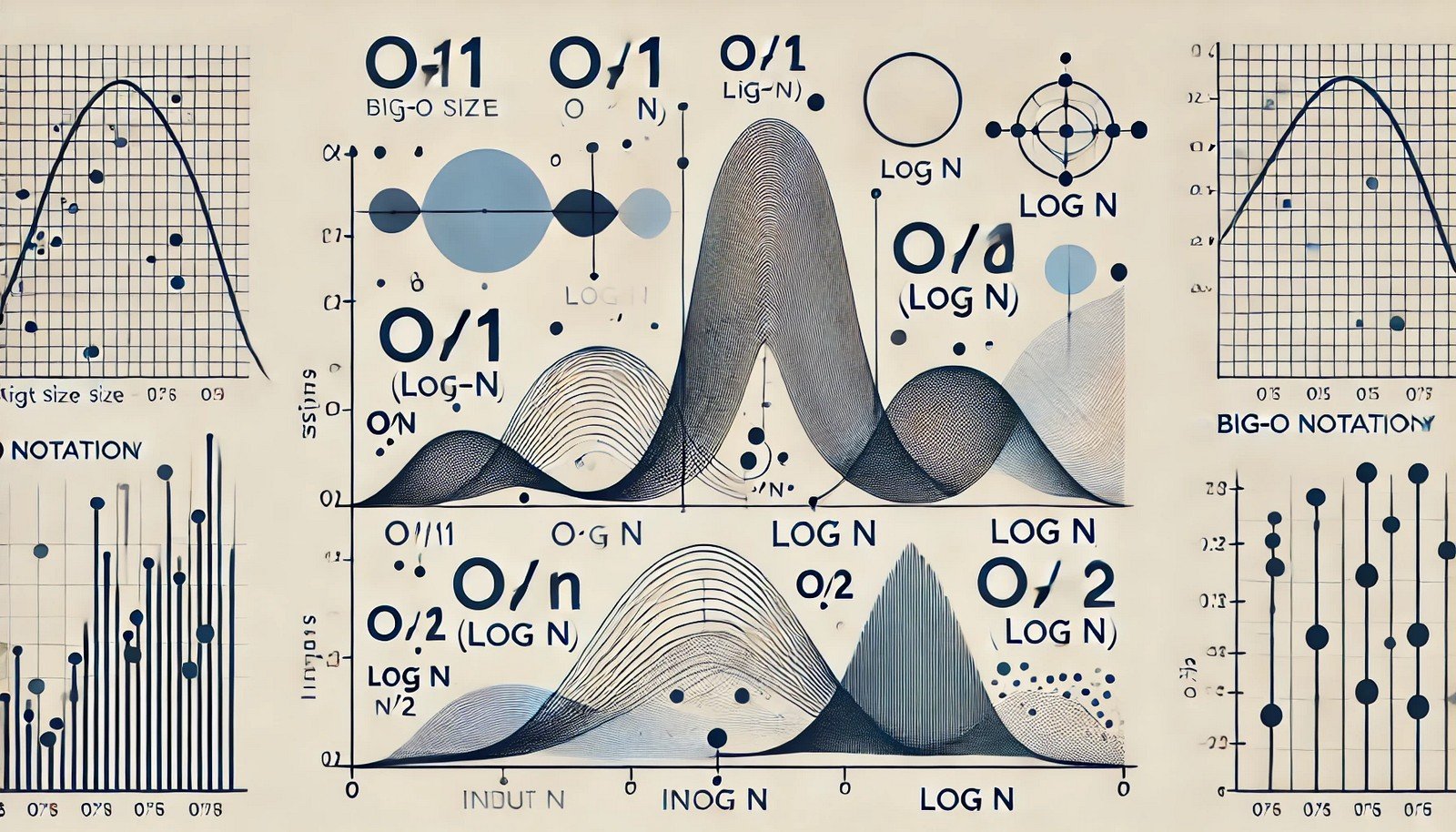Big-O Notation
 (Representational Image | Source: Dall-E)
(Representational Image | Source: Dall-E)
Quick Navigation:
- Big-O Notation Definition
- Big-O Notation Explained Easy
- Big-O Notation Origin
- Big-O Notation Etymology
- Big-O Notation Usage Trends
- Big-O Notation Usage
- Big-O Notation Examples in Context
- Big-O Notation FAQ
- Big-O Notation Related Words
Big-O Notation Definition
Big-O Notation is a mathematical concept used to describe the performance or complexity of an algorithm. It measures how the runtime or space requirements grow as the input size increases. Big-O helps developers understand the worst-case scenario for how long an algorithm will take to execute or how much memory it will require. Common complexities in Big-O include O(1) for constant time, O(n) for linear time, and O(n²) for quadratic time.
Big-O Notation Explained Easy
Think of Big-O Notation as a way to measure how long it takes to clean your room as it gets messier. If you have one toy to pick up, it’s quick (O(1)). If you have a hundred toys, it will take longer (O(n)). Some cleaning methods are faster, while others are slower. Big-O is a way to compare those methods to know which one works best as the mess grows.
Big-O Notation Origin
The concept of Big-O notation originated in mathematics in the early 20th century. It was later adapted for computer science by Andrey Kolmogorov and others to analyze algorithms and their efficiency.
Big-O Notation Etymology
The "O" in Big-O stands for "Order," indicating the order of growth or how an algorithm scales with increasing input size.
Big-O Notation Usage Trends
With the rise of data-intensive applications, Big-O Notation has gained prominence. Modern developers and data scientists rely on it to optimize algorithms, especially for large datasets in fields like machine learning, data processing, and web development.
Big-O Notation Usage
- Formal/Technical Tagging: Algorithm Analysis, Computational Complexity, Data Structures
- Typical Collocations: "Big-O analysis," "time complexity," "algorithm efficiency," "O(n log n) complexity"
Big-O Notation Examples in Context
- Searching for an item in an unsorted list has O(n) complexity, meaning the time it takes grows linearly with the size of the list.
- Binary search has a time complexity of O(log n), making it much faster for large datasets compared to linear search.
- Sorting algorithms like quicksort typically have an average-case complexity of O(n log n), while bubble sort has O(n²) complexity.
Big-O Notation FAQ
- What is Big-O Notation? Big-O Notation describes the performance or complexity of an algorithm in terms of input size.
- Why is Big-O Notation important? It helps developers predict how an algorithm will scale and compare different solutions for efficiency.
- What are common Big-O complexities? Examples include O(1), O(n), O(n²), and O(log n). Each represents a different rate of growth.
- How is Big-O used in software development? It’s used to analyze algorithms, especially in data structures, databases, and optimization problems.
- What does O(1) mean? O(1) means constant time — the algorithm's performance does not depend on the input size.
- What’s the difference between O(n) and O(n²)? O(n) grows linearly, while O(n²) grows quadratically, meaning it’s much slower for large inputs.
- Is Big-O Notation used in real-life applications? Yes, it’s crucial in search engines, financial modeling, and artificial intelligence.
- What is O(log n) complexity? O(log n) means the runtime grows logarithmically, which is highly efficient for large datasets.
- How does Big-O relate to memory usage? It also applies to space complexity, measuring how memory requirements grow with input size.
- What is the worst Big-O complexity? O(2^n) and O(n!) are among the worst, indicating exponential growth and high computational cost.
Big-O Notation Related Words
- Categories/Topics: Algorithm Analysis, Data Science, Computational Mathematics
Did you know? Big-O Notation was popularized in the field of computer science to ensure scalable solutions. Companies like Google rely heavily on Big-O to optimize search algorithms, handling billions of daily queries efficiently.
PicDictionary.com is an online dictionary in pictures. If you have questions or suggestions, please reach out to us on WhatsApp or Twitter.Authors | Arjun Vishnu | @ArjunAndVishnu

I am Vishnu. I like AI, Linux, Single Board Computers, and Cloud Computing. I create the web & video content, and I also write for popular websites.
My younger brother, Arjun handles image & video editing. Together, we run a YouTube Channel that's focused on reviewing gadgets and explaining technology.



Comments powered by CComment